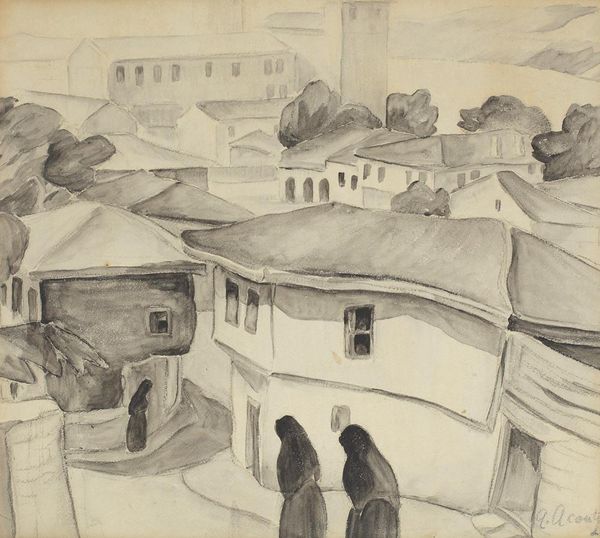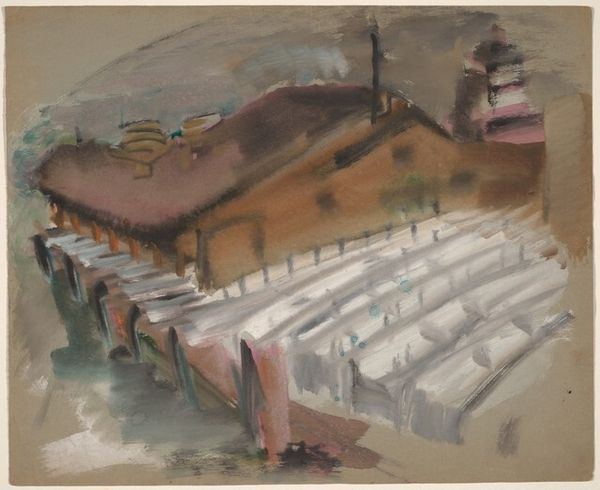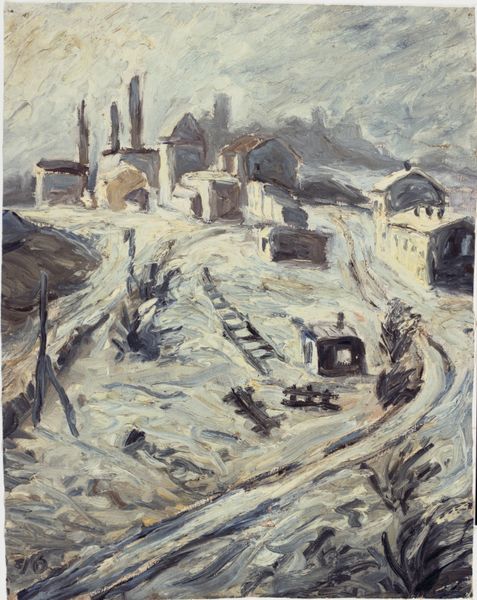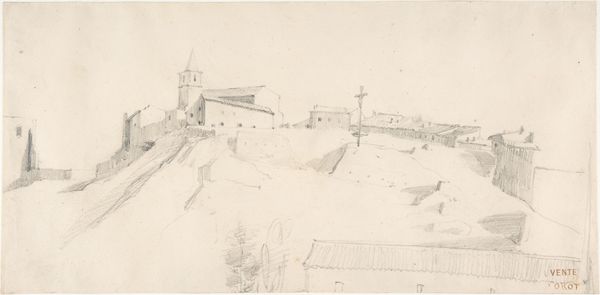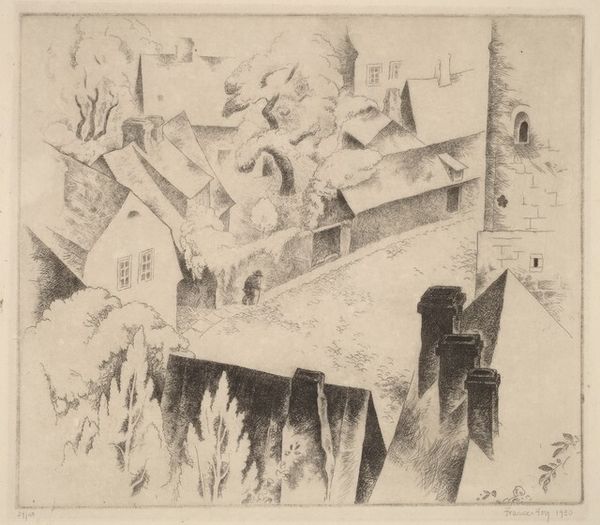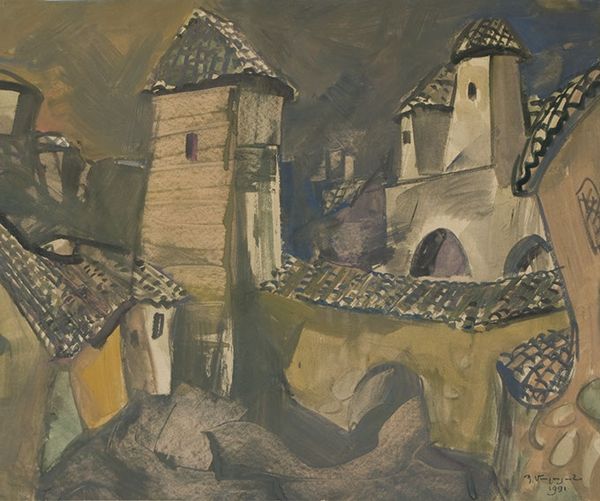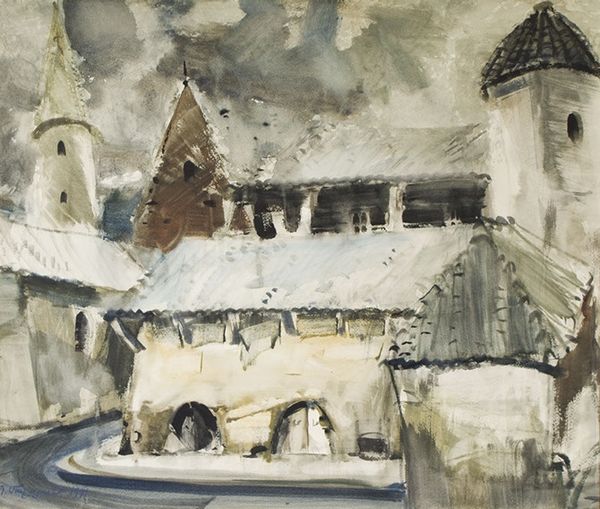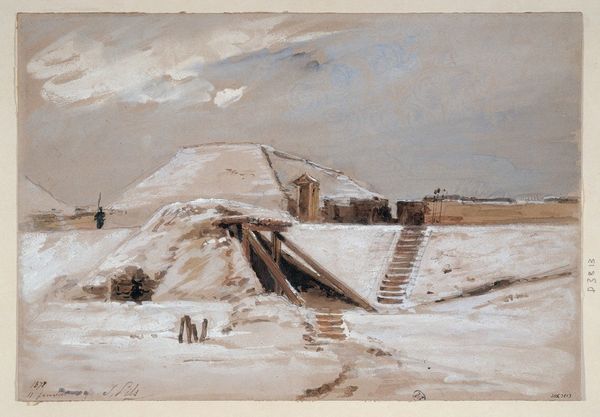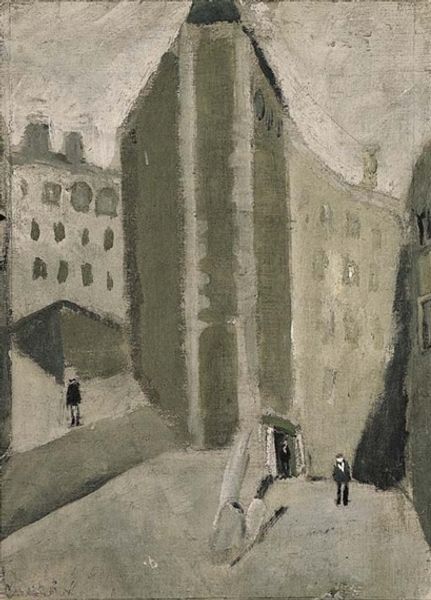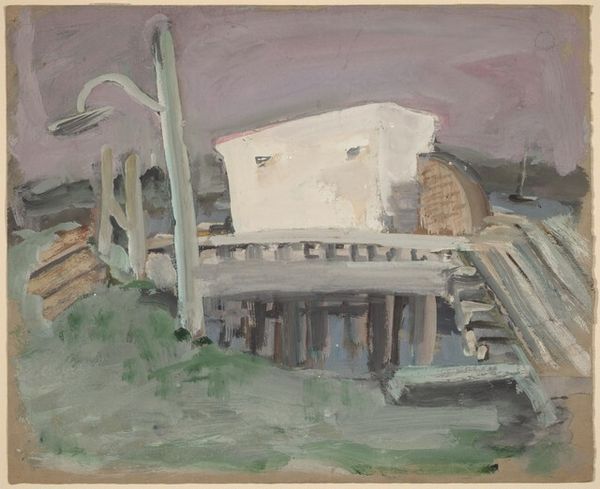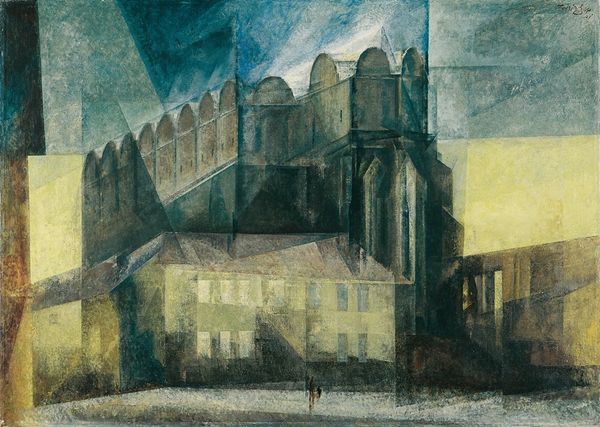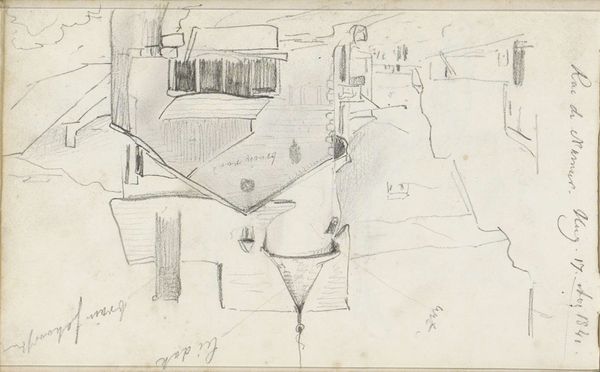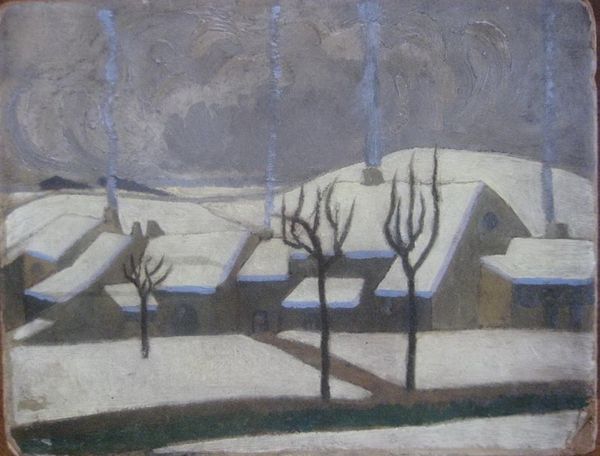
painting, oil-paint, impasto
#
painting
#
oil-paint
#
landscape
#
oil painting
#
impasto
#
cityscape
#
modernism
#
realism
Copyright: Public domain US
Curator: Here we have Tsuguharu Foujita's "Porte d'Arcueil" from 1918, rendered in oil paint with an almost sculptural use of impasto. Editor: Brrr, it's visually cold, isn't it? That blanket of snow gives everything a heavy, muted feel. A scene of stark, wintry stillness. Curator: Observe how the composition relies on horizontal planes dissected by the strong verticality of the sparse architectural elements and bare trees in the background. Notice the restricted palette. Foujita masterfully limits himself, achieving tonal complexity within a narrow range of greys and whites. Editor: The snow isn't just snow, it is symbolic: covering and transforming the familiar into something almost ghostly. And, did Arcueil bear some particular resonance for Foujita during the period of its creation, or serve a metaphorical purpose? Perhaps isolation or alienation. Curator: The rhythmic arches of the porte provide structural integrity, guiding the eye through the landscape while contrasting with the amorphous shapes created by the heavy snowfall. It demonstrates a Modernist tension between the natural and the man-made through geometric components. Editor: Precisely, there's a somber quality; it's not merely representational but laden with unspoken meaning, a wintering of the soul, even. Foujita employs what's there in Arcueil as an almost archetypal winter village. Curator: Agreed. Through careful deployment of line and mass, a spatial dialectic is established. It’s far more than a mere depiction; it is about how we organize pictorial space and arrive at a sensation. Editor: Reflecting upon it now, the enduring appeal emanates from this very ability to transpose a particular mood. The transformation of the landscape through symbols echoes how memory alters what we perceive. Curator: Indeed, its brilliance lies in that structural negotiation, capturing something fundamental in how paint engenders emotional valence via pictorial mechanics.
Comments
No comments
Be the first to comment and join the conversation on the ultimate creative platform.
